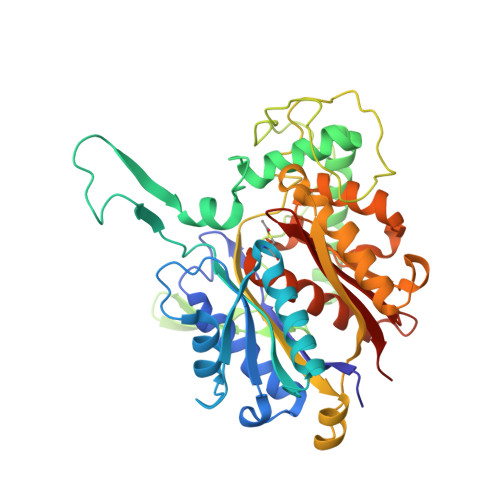Gut microbial metabolism of 5-ASA diminishes its clinical efficacy in inflammatory bowel disease.
Mehta, R.S., Mayers, J.R., Zhang, Y., Bhosle, A., Glasser, N.R., Nguyen, L.H., Ma, W., Bae, S., Branck, T., Song, K., Sebastian, L., Pacheco, J.A., Seo, H.S., Clish, C., Dhe-Paganon, S., Ananthakrishnan, A.N., Franzosa, E.A., Balskus, E.P., Chan, A.T., Huttenhower, C.(2023) Nat Med 29: 700-709
- PubMed: 36823301
- DOI: https://doi.org/10.1038/s41591-023-02217-7
- Primary Citation of Related Structures:
8ECM - PubMed Abstract:
For decades, variability in clinical efficacy of the widely used inflammatory bowel disease (IBD) drug 5-aminosalicylic acid (5-ASA) has been attributed, in part, to its acetylation and inactivation by gut microbes. Identification of the responsible microbes and enzyme(s), however, has proved elusive. To uncover the source of this metabolism, we developed a multi-omics workflow combining gut microbiome metagenomics, metatranscriptomics and metabolomics from the longitudinal IBDMDB cohort of 132 controls and patients with IBD. This associated 12 previously uncharacterized microbial acetyltransferases with 5-ASA inactivation, belonging to two protein superfamilies: thiolases and acyl-CoA N-acyltransferases. In vitro characterization of representatives from both families confirmed the ability of these enzymes to acetylate 5-ASA. A cross-sectional analysis within the discovery cohort and subsequent prospective validation within the independent SPARC IBD cohort (n = 208) found three of these microbial thiolases and one acyl-CoA N-acyltransferase to be epidemiologically associated with an increased risk of treatment failure among 5-ASA users. Together, these data address a longstanding challenge in IBD management, outline a method for the discovery of previously uncharacterized gut microbial activities and advance the possibility of microbiome-based personalized medicine.
- Division of Gastroenterology, Massachusetts General Hospital and Harvard Medical School, Boston, MA, USA.
Organizational Affiliation:

















